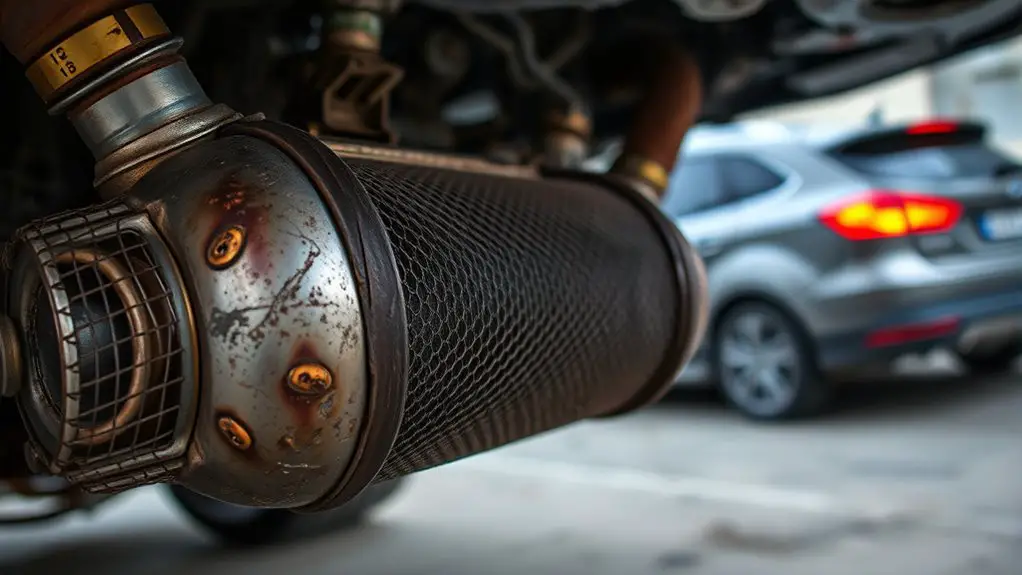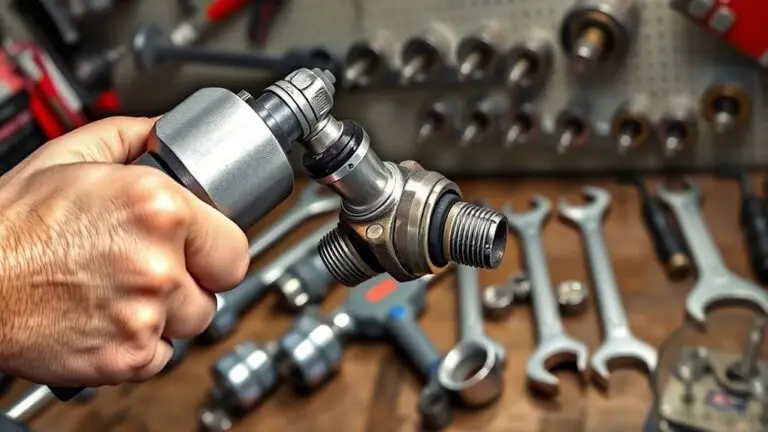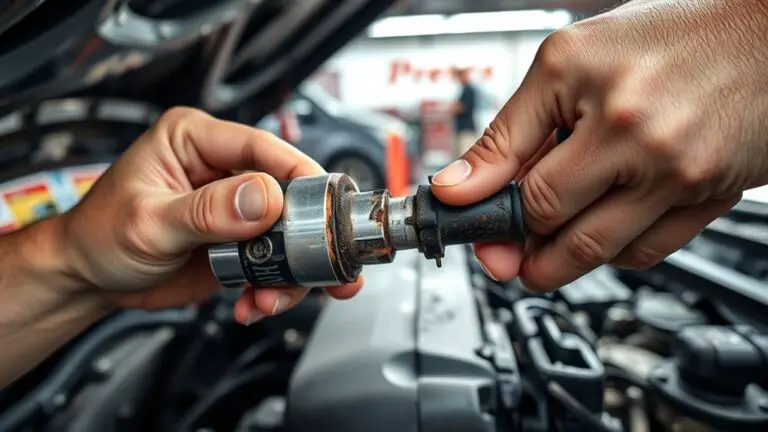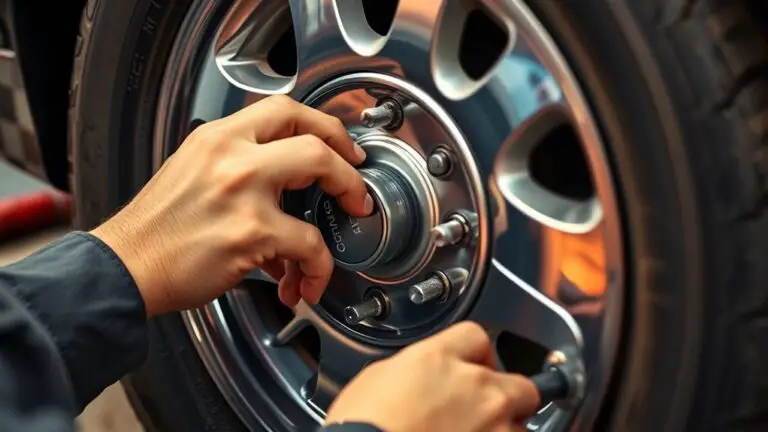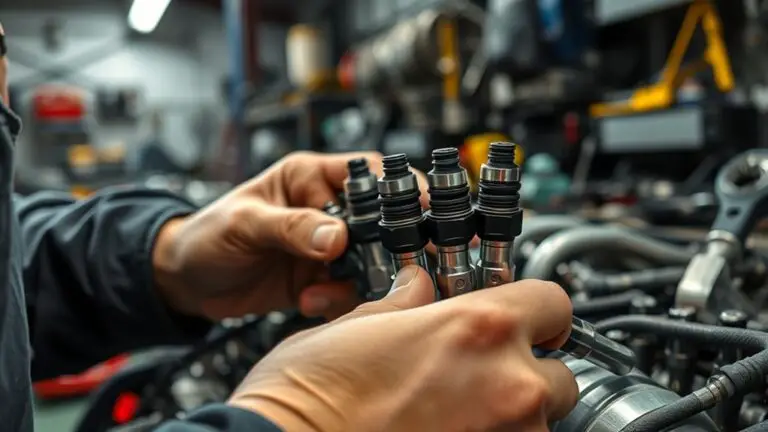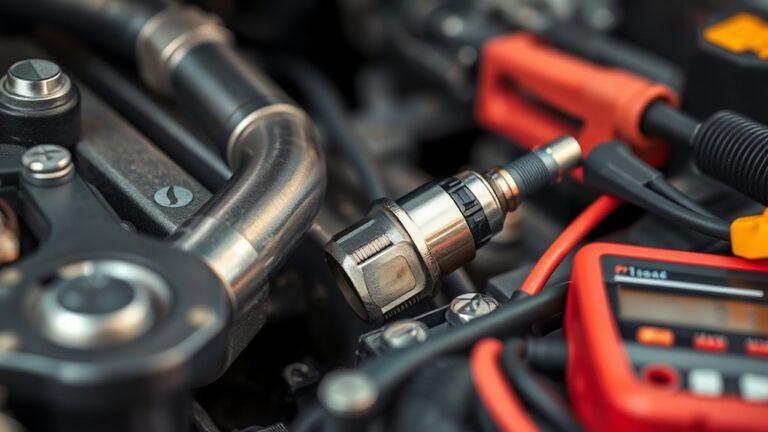How Driving Habits Influence Catalytic Converter Failure and Emissions
Your driving habits directly shape catalytic converter wear and emissions by controlling how quickly your exhaust reaches light-off, how heat cycles affect the catalyst, and how fuel mixture and transient peaks drive aging. Consistent engine loads promote stable temperatures; short trips prevent light-off, raising unburned fuel and thermal stress. Aggressive driving elevates temperatures and particulates, accelerating wear. Idling and high-RPM cruising worsen heat cycles. Drive smoother, longer trips, and maintain your engine to extend converter life—and you’ll uncover more practical insights ahead.
Understanding How Driving Habits Affect Catalytic Converter Lifespan
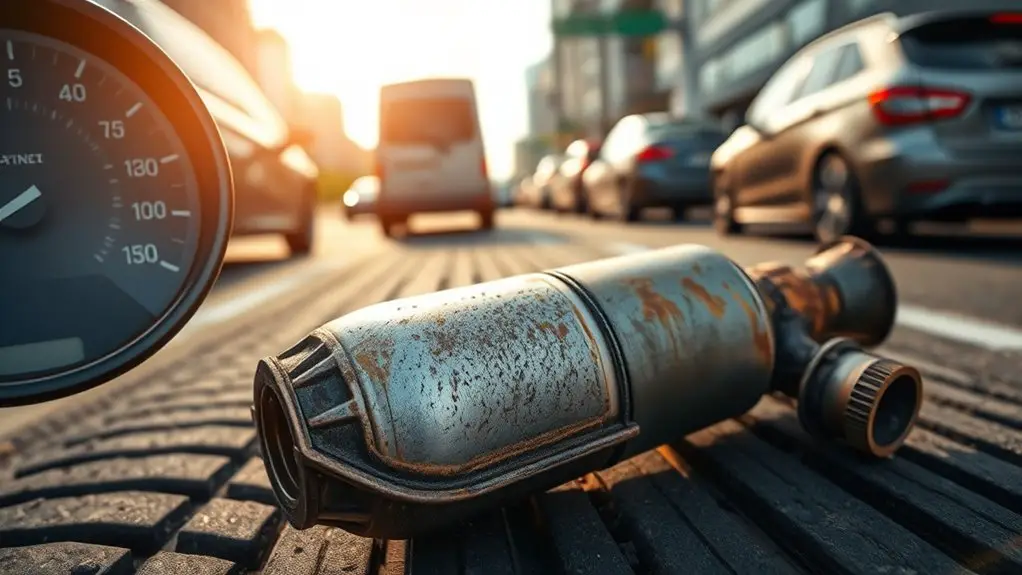
Driving habits directly influence catalytic converter lifespan by shaping how efficiently the exhaust system operates and how quickly contaminants accumulate. You’ll experience this through consistency in engine load, trip duration, and idle patterns, which determine fuel and combustion byproducts reaching the converter. Your driving style impact hinges on avoiding extended high-speed operation with poor catalytic light-off, and on preventing frequent short trips that leave the catalyst cold. Regular, moderate accelerations promote steady temps, reducing thermal cycling stress and preserving substrate integrity. Prioritize smooth deceleration to minimize exhaust surge, and guarantee the exhaust flow remains uninterrupted by leaks or obstructions. Routine catalytic converter maintenance includes timely inspection for misfires, sensor faults, and fuel system issues that can poison the catalyst. Maintain spark and fueling efficiency to sustain clean combustion. By aligning maintenance with purposeful driving, you extend converter life, sustain emission performance, and preserve your freedom to choose efficient, reliable travel.
The Link Between Heat Cycles, Fuel Mixture, and Emissions
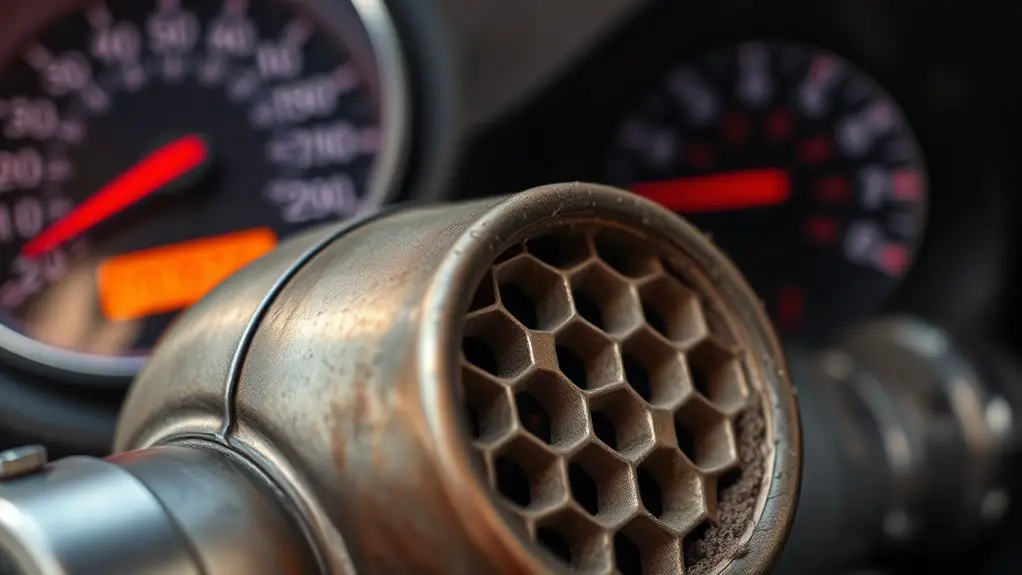
Heat cycles and the fuel-air mix directly shape emissions by controlling how completely the catalytic converter reaches and maintains its active temperature while processing exhaust. You’ll notice that frequent thermal swings stress the substrate, altering light-off behavior and conversion efficiency. The fuel mixture determines exhaust composition and temperature: rich conditions raise catalyst-workload and can overheat, while lean conditions chill the system and slow nitrogen oxide reduction. Proper heat cycles keep the catalyst near its ideal operating window, maximizing conversion of CO and hydrocarbons while stabilizing NOx reduction. You’ll experience lower emissions when the engine management system sustains steady temperatures during changes, maintaining consistent air-fuel ratio and exhaust heat. In practice, precise control of heat cycles and fuel mixture reduces variability in emissions across driving cycles, supporting durability and compliance.
| Heat cycles impact | Fuel mixture impact |
|---|---|
| Stabilizes temperature | Determines exhaust chemistry |
| Affects light-off | Changes catalyst loading |
| Influences aging | Alters NOx performance |
| Modulates peak temps | Impacts hydrocarbon oxidation |
| Governs recovery | Affects CO reduction |
Aggressive Driving: Impacts on Catalyst Clogging and Overheating
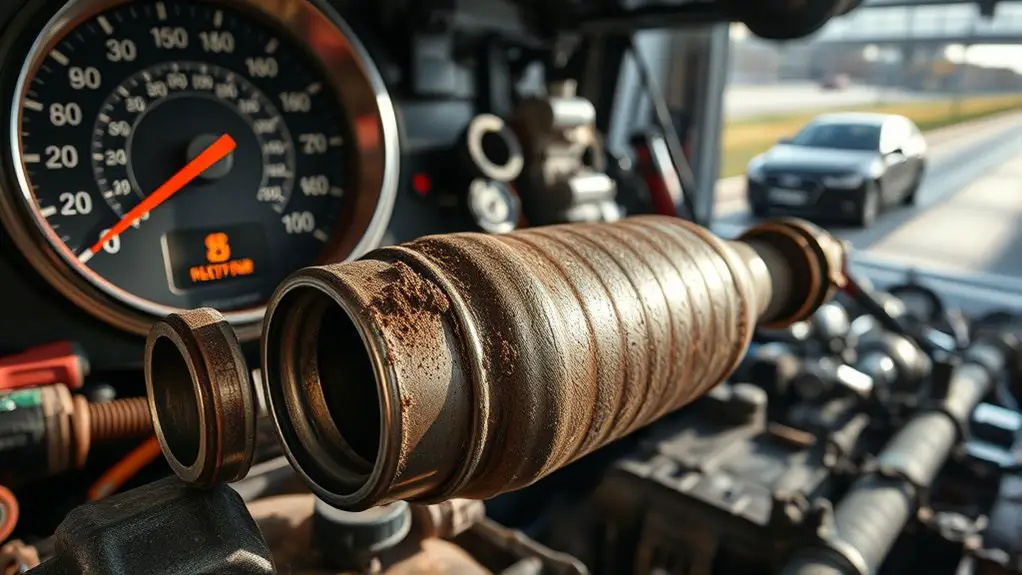
Aggressive driving accelerates catalyst wear by spiking exhaust temperatures and surge-prone fuel demands, which can lead to clogging from soot buildup and excessive thermal stress. You experience higher catalyst temperatures during rapid accelerations and heavy deceleration, stressing the substrate and binder. This elevates operating temperatures beyond ideal ranges, promoting thermal aging and microcracking that accelerate failure modes. Your driving patterns determine duty cycle: frequent high-load shifts increase heat soak and fuel-rich zones, raising particulate loading and potential ash deposition. When you push the throttle aggressively, you also induce catalyst temperature fluctuations that impair steady-state conversion efficiency, raising emissions even at cruise. Short, abrupt maneuvers amplify transient peaks, compounding aging effects. To preserve performance, monitor fuel trim and avoid sustained high RPMs where possible. Consistent, moderate acceleration and smooth deceleration stabilize temperatures, reducing clogging risk and maintaining reliable conversion. Focus on deliberate driving patterns to protect catalyst integrity and emissions performance.
The Role of Idling and Short Trips in Catalyst Degradation
Short trips and extended idling keep the exhaust system at low but steady temperatures, preventing the catalytic converter from reaching its ideal light-off temperature and enabling unburned fuel to linger in the chamber. When you repeatedly idle or rely on short trips, you reduce the catalyst’s operating window, exposing it to rich conditions that elevate thermal stress and chemical aging. Over time, the precious metals become less effective at promoting oxidation, increasing emissions and accelerating degradation. The idling impact appears as gradual ash-like buildup and sintering risks, while short trips fail to heat the substrate enough for complete conversion. Your driving pattern consequently directly influences catalyst longevity, fuel economy, and regulatory compliance. To minimize damage, favor longer, steady trips that bring the exhaust to light-off quickly and sustain it through steady-state operation. Balance is key: avoid prolonged idle, but make certain warm-up occurs under controlled, moderate loads.
- idling impact
- short trips
- catalyst longevity considerations
Practical Tips to Drive Smarter and Extend Your Converter’s Life
To extend your converter’s life, adopt driving habits that bring the exhaust to operating temperature quickly and sustain it with steady, moderate loads. You reduce thermal cycling by avoiding abrupt accelerations and prolonged high-RPM cruising, which stress the substrate and can accelerate aging. Prioritize smooth throttle changes and steady speeds within efficiency ranges to maintain catalyst light-off and consistent zone. Maintain engine health through proactive maintenance practices: regular air-filter checks, proper fuel delivery, and timely oxygen sensor replacement to prevent rich or lean faults that foul the catalyst. Aim for consistent fuel efficiency by planning trips, using cruise control where appropriate, and eliminating excessive idling. Keep the vehicle aligned and tires inflated to spec to minimize parasitic losses that force richer fuel mixes. Use quality fuels and adhere to scheduled maintenance intervals, as these practices preserve oxidation-reduction balance and prolong converter life, preserving performance, safety, and freedom on the road.
Frequently Asked Questions
How Does Cold-Start Duration Affect Catalyst Aging in Daily Driving?
Short answer: longer cold-start duration accelerates catalyst aging in daily driving. When you start from cold, engine temperature isn’t ideal, so cold start emissions surge, heating the exhaust and substrate unevenly. Repeated cycles stress the catalytic material, reducing its active surface over time. You’ll notice quicker light-off and higher emissions until the system reaches operating temperature. To minimize aging, limit short trips, allow a full warm-up, and maintain thermostat-controlled engine temperature for consistent performance.
Can Specific Vehicle Models Resist Catalyst Degradation Under Heavy Use?
Some enthusiasts claim certain models resist catalyst degradation under heavy use, but evidence isn’t definitive. You’ll find no model is immune; engine reliability hinges on materials, tuning, and maintenance. In a model comparison, look for robust high‑temperature coatings, OCI schedules, and proactive fuel-system control. If you push hard, expect accelerated aging unless you balance load with proper cooling and fueling. You can rely on well‑engineered designs, but maintenance remains essential for longevity.
Do Highway Speeds Reduce Catalyst Fouling Compared to City Driving?
Yes, highway speeds typically reduce catalyst fouling versus city driving. At sustained speeds, you maintain higher highway efficiency, improving exhaust gas temperatures and reducing fuel-rich conditions that foul the catalyst. You’ll see lower city emissions when you avoid frequent stops, starts, and idling. Maintain steady throttle, and your driving favors efficient conversion. This balance supports better catalyst longevity and cleaner emissions, aligning with highway efficiency goals while mitigating city emissions challenges.
What Role Do Aftermarket Fuels Play in Converter Efficiency?
Aftermarket fuels can influence catalyst efficiency, but effects vary by formulation. Higher fuel quality often reduces fuel-system deposits, improving combustion and lowering emissions impact. Conversely, fuels with improper blends or contaminants can increase sulfur or aromatics, degrading the catalytic surface and raising emissions. You should assess fuel quality to maintain converter performance, monitor exhaust indicators, and choose fuels that minimize emissions impact while preserving long-term durability of the aftertreatment system.
How Quickly Can Driving Style Changes Improve Catalyst Health?
You can see improvements in catalyst health within weeks if you adopt targeted driving techniques like steady speeds, smooth acceleration, and minimal braking. Rapid gains come from reducing rich, transient conditions that flood the exhaust with unburned fuel. Consistency matters: longer highway runs help heat the catalyst to ideal operating temperatures. These changes contribute toward emission reduction, and you’ll feel lighter throttle response as efficiency rises, supporting freedom to drive with confidence and responsibility.

